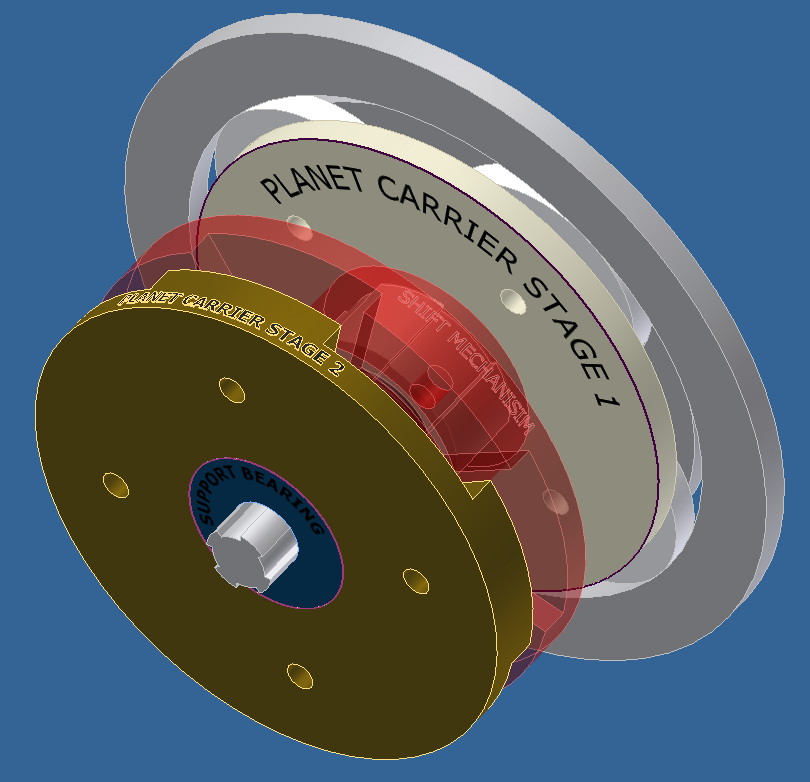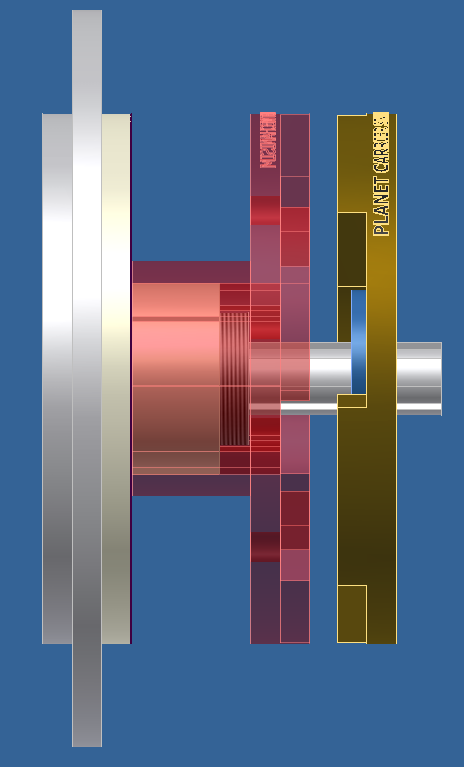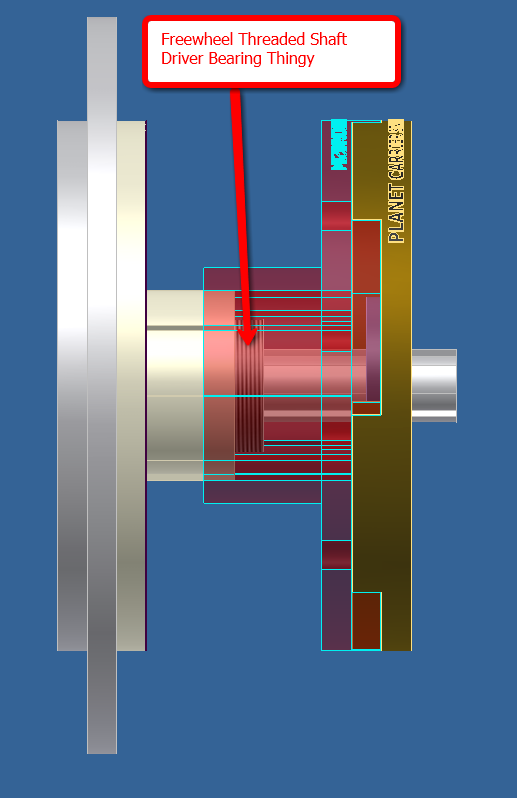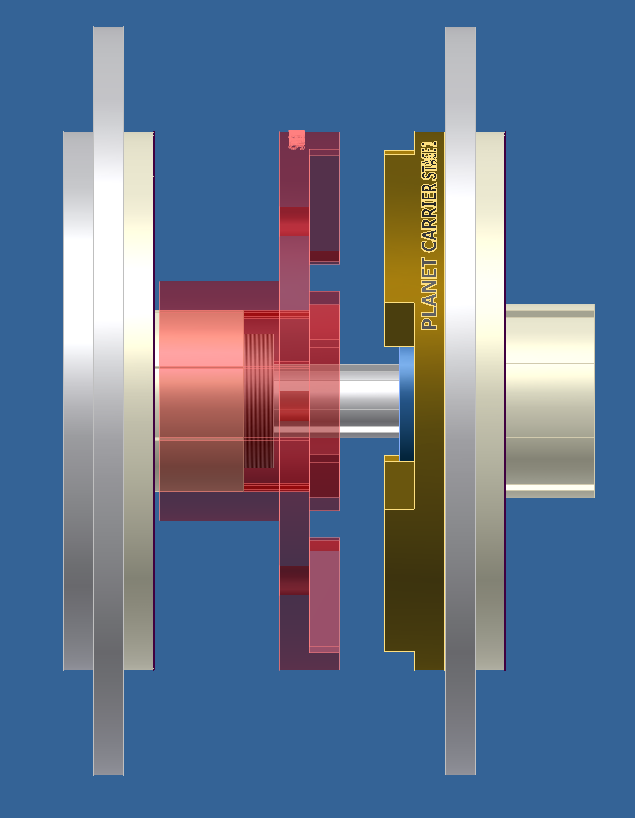I believe cargo trikes and E-motorcycles can really benefit from a simple strong reliable 2-speed tranny. For most e-bikes, I doubt it will be worth it with the way the RC drives are quickly developing.
That being said, I think the centrifugal aspect of this is better operated from the output shaft, so gear is dependent on wheel speed. Not quite sure yet of a good way to do that, probably several do-able ways.
There's a 2-speed E-moto thread, and I just posted over there about an "F&P" German bicycle 2-speed automatic. Two centrifugal weights spin out against springs, and at a certain output RPM, they engage a part with a spiral element. When the spiral part moves, it slides over a dog-clutch to lock the input to the output so the second gear is a 1:1. The low RPM gear is 1.36:1 (but if we cobbled one together, it could be a wider ratio).
They advertise its for a tandem bike (power of two pedalers pushing a heavy steel two-seater), and the guts look very rugged. They advertise its cost is 100 Euro's.
I have read of builders putting pretty high power levels (5,000W/7-HP?) through a Nexus 3-speed hub with no problems. I believe they used a trike hub which was advertised as being very stout. The F&P gears look much longer (only one speed + a dog clutch) and very stout.








